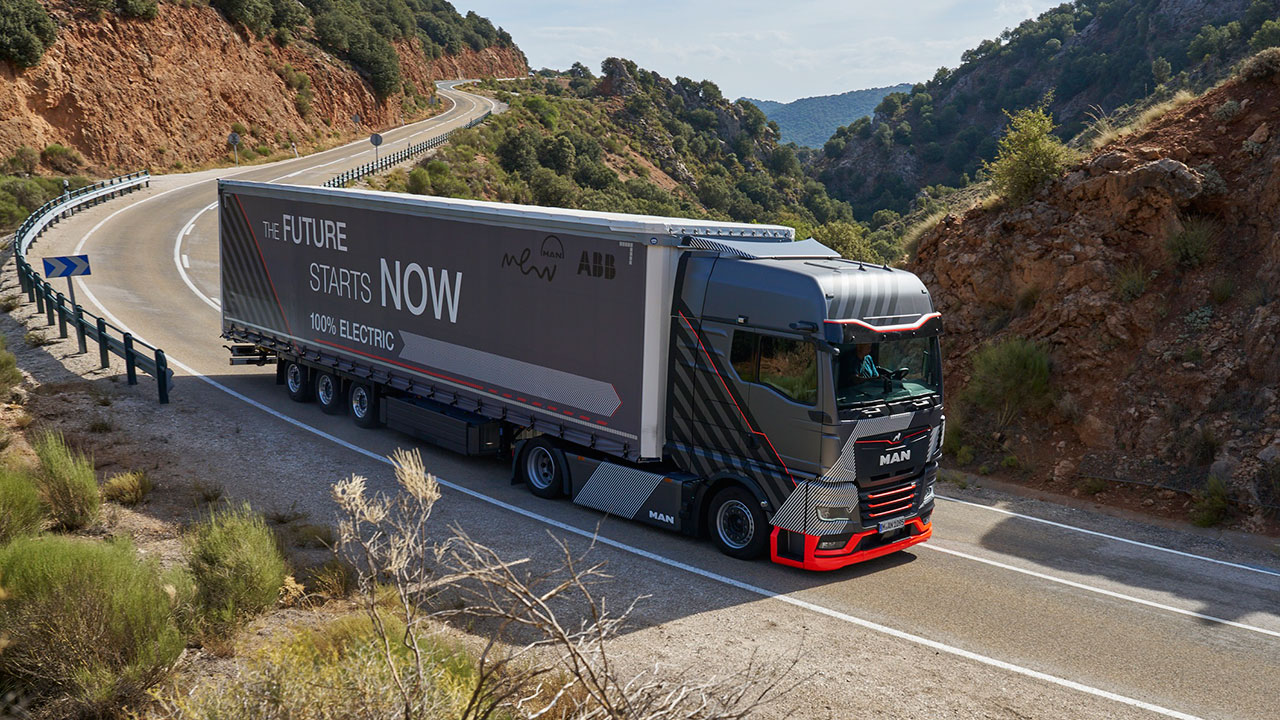Most of the orders and inquiries are for large-scale production, which is scheduled to start in 2025 at the MAN plant in Munich, Germany. Diesel and battery-electric trucks will then be produced on the same assembly line, giving the manufacturer maximum flexibility. However, small-series production will start this year.
MAN only opened the order books for the eTruck in October last year. It will be offered as the eTGX for long-haulage and the eTGS for distribution. Both models are based on the same modular system. The differences between the eTGX and eTGS correspond to the familiar diesel models, for example the wider cab of the TGX. However, the modular technology is the same for the powertrain. Depending on the configuration, the electric motor delivers 254 kW, 330 kW or 400 kW with a maximum torque of 800, 1,150 or 1,250 Newton meters.
With up to six battery packs, two under the cab and up to four on the side of the vehicle frame, both provide up to 480 kWh of usable battery capacity for daily ranges of up to 800 kilometers. In addition to DC charging via CCS with up to 375 kW, the manufacturer offers the even more powerful Megawatt Charging Standard (MCS) for fast intermediate charging during breaks in driving.
MAN announced DB Schenker as its first customer a year ago, even before the official order launch. The logistics service provider plans to purchase a total of 100 heavy-duty electric trucks by 2026. “The right vehicles for the drive turnaround in road freight transport are therefore here and will be rolling out to the first customers this year,” says Alexander Vlaskamp, CEO of MAN Truck & Bus.
Even before the purchase of a new eTruck, MAN supports customers with its 360-degree eMobility Consulting. In addition to advice on the most suitable vehicle, this also includes consideration of customer-specific operating conditions, including cost optimization, route analysis, fleet optimization and, building on this, the necessary advice on charging infrastructure.
Source: MAN


